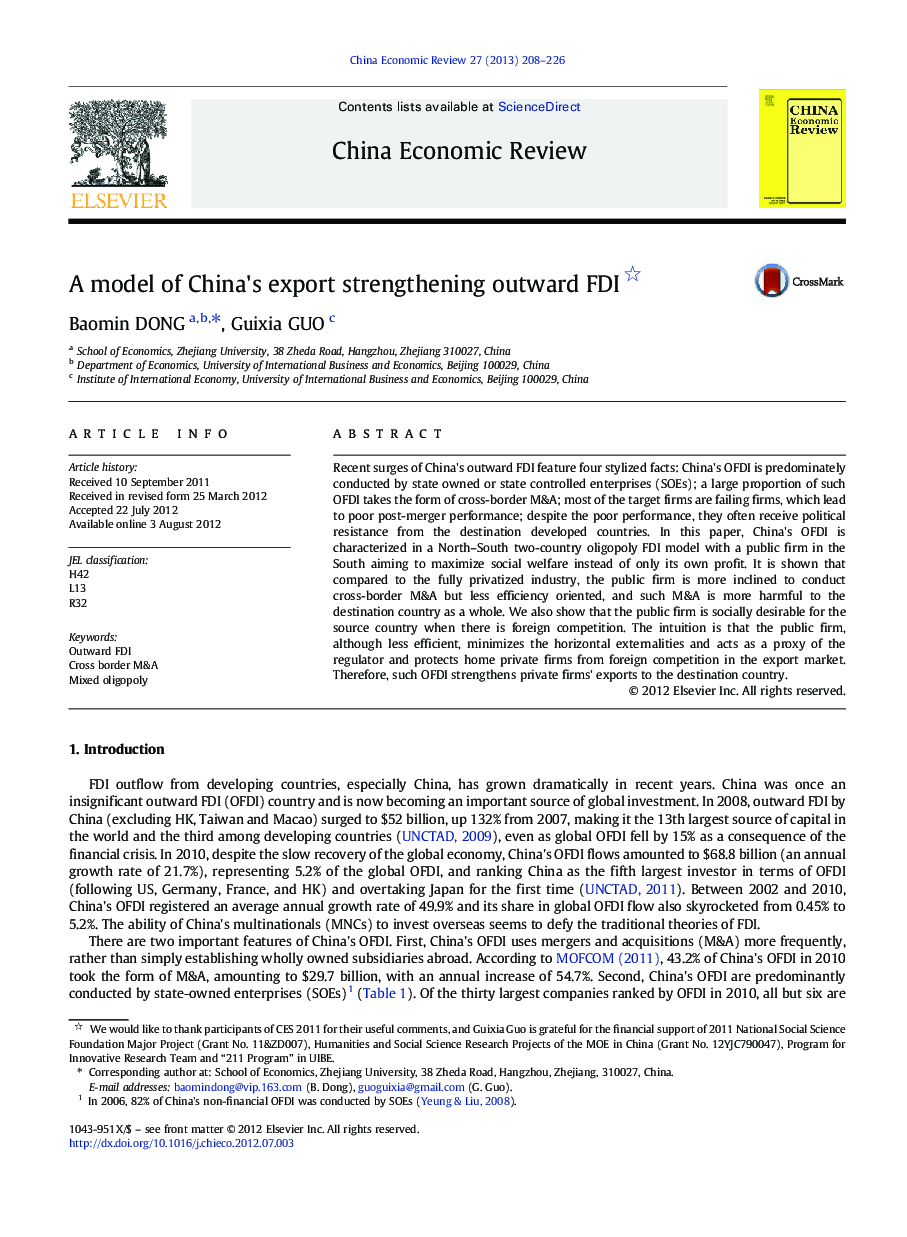| Article ID | Journal | Published Year | Pages | File Type |
|---|---|---|---|---|
| 5047679 | China Economic Review | 2013 | 19 Pages |
Recent surges of China's outward FDI feature four stylized facts: China's OFDI is predominately conducted by state owned or state controlled enterprises (SOEs); a large proportion of such OFDI takes the form of cross-border M&A; most of the target firms are failing firms, which lead to poor post-merger performance; despite the poor performance, they often receive political resistance from the destination developed countries. In this paper, China's OFDI is characterized in a North-South two-country oligopoly FDI model with a public firm in the South aiming to maximize social welfare instead of only its own profit. It is shown that compared to the fully privatized industry, the public firm is more inclined to conduct cross-border M&A but less efficiency oriented, and such M&A is more harmful to the destination country as a whole. We also show that the public firm is socially desirable for the source country when there is foreign competition. The intuition is that the public firm, although less efficient, minimizes the horizontal externalities and acts as a proxy of the regulator and protects home private firms from foreign competition in the export market. Therefore, such OFDI strengthens private firms' exports to the destination country.
